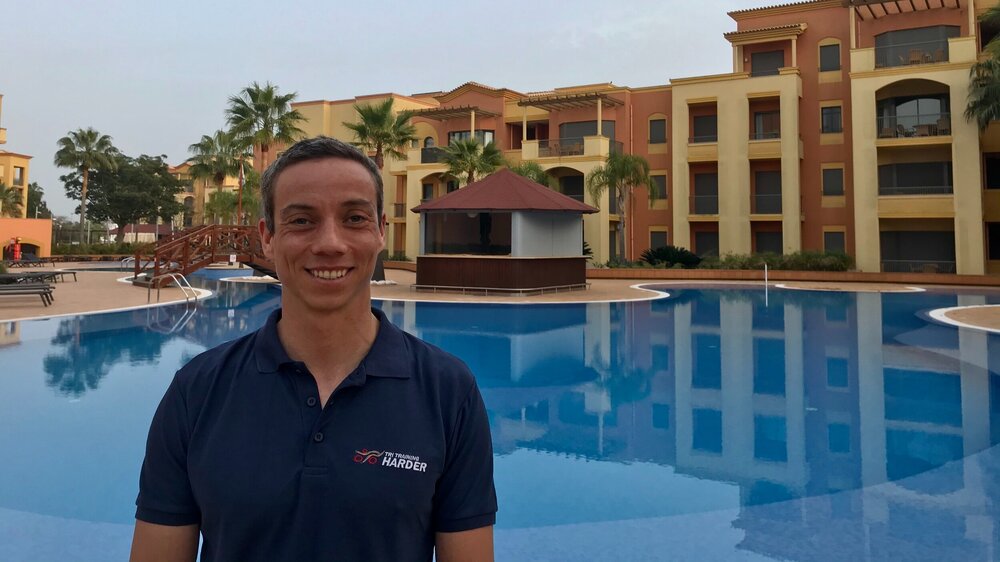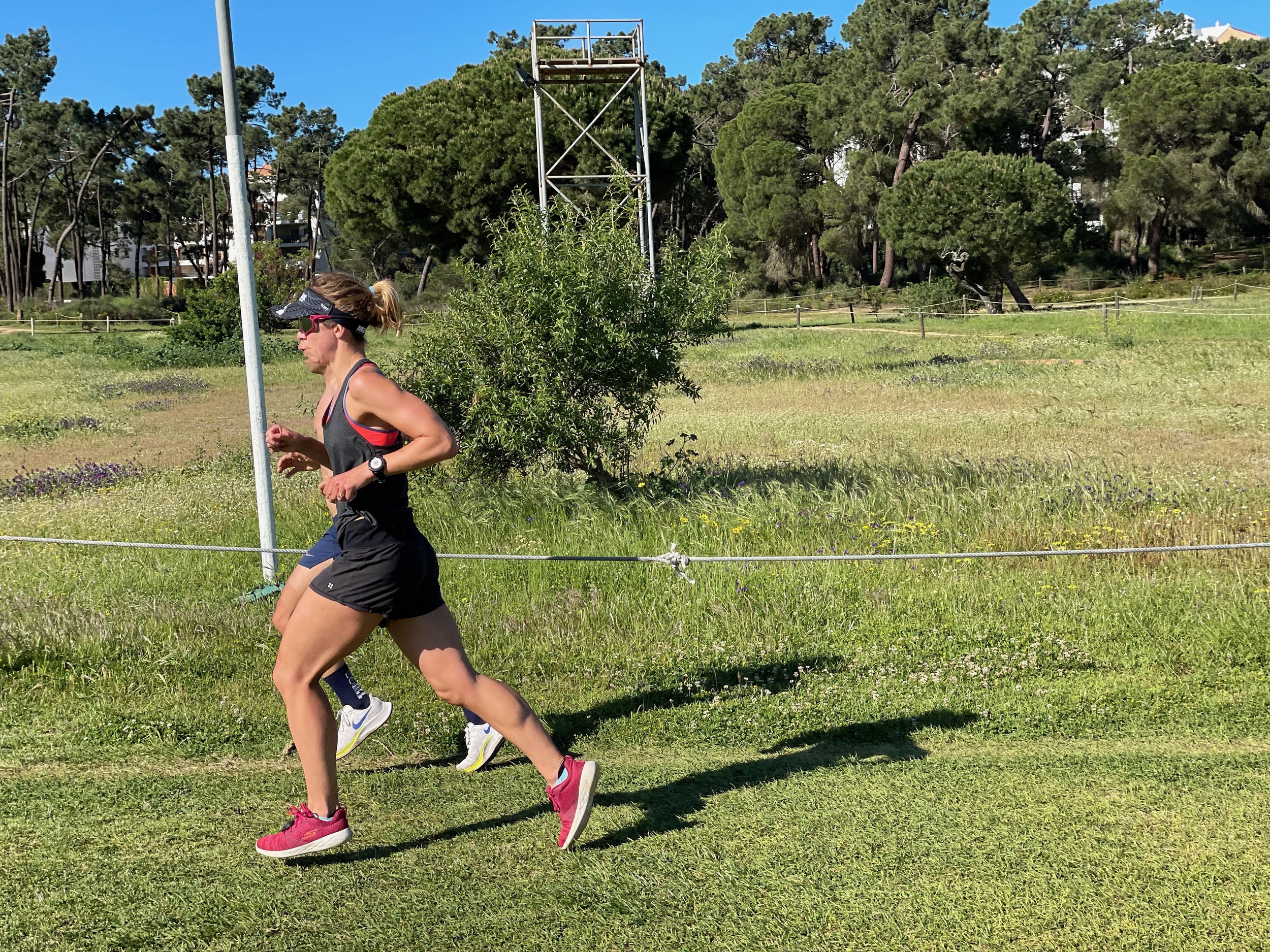How do the top carbon shoes make runners faster?
Over recent years there has been a boom in carbon-plated running shoes. Following Nike’s revolutionary Vaporfly 4%, most of the major running shoe brands have now developed their own carbon-plated models. These shoes are all about improving efficiency and, as a result, enhancing your performance. In this two-part blog, Coach Jon explores how these work and how they can make you faster.
To understand how these carbon shoes work, let’s first look at their development.
There are several variables running shoe manufacturers can tweak to alter the performance of a running shoe:
The weight of the shoe
The cushioning in the shoe
The energy return from the shoe
These variables play off against each other; reduction in the mass of a shoe will allow a runner to swing their legs more efficiently; however, if you want more cushioning and energy return, the mass of the shoe will have to increase. A 2016 study showed performance times rose by an average of 0.78% per 100g increase in shoe weight over a 3km distance, suggesting lighter is faster. However, studies have also found that if the shoes are too light, think Vibram FiveFingers, the benefits are diminished due to the lack of cushioning.
This study took away the weight variable of shoes by lining a treadmill with EVA foam. They found the benefit of having a soft landing can reduce metabolic cost by 1.6%. They concluded that the extra weight of the cushioning negates the benefit of the energy saving cushioning. So which is better? Light or cushioned?
Since these studies, there have been major advancements in the quality of foam used in top-end shoes. Nike went away from targeting a super lightweight shoe and prioritised cushioning and energy return. This led to the development of the ZoomX (PEBA) foam. This new foam is much lighter, softer, and more responsive than traditional EVA foam. The new foam also allowed an increased stack height to be built into the Nike shoes leaving room for a carbon plate, bringing about huge improvements in energy return and therefore running economy.
Running economy (also referred to as running efficiency) is used in many studies to compare running shoes. It can be defined as the oxygen consumption (VO2) or the energy requirement (kcal) to run at a given speed. It is a key determinant of running performance. An improved running economy allows you to run at a given speed at a reduced energy cost, or conversely run faster at the same physiological intensity.
The addition of the carbon plate improves running economy by reducing ankle flexion and improving ankle mechanics. The amount of 'work' that the ankle joint, and surrounding structures, have to do at a given workload is reduced by the carbon plate because it essentially helps the natural rolling process. The curve of the carbon plate helps forward momentum and helps to lift the heel of the shoe faster. Carbon plates also enhance energy return by adding structure and stability to the midsole foam.
An additional benefit of these shoes, which is often overlooked, is the fatigue-reducing cushioning benefits of the new foam used in these top-end shoes. Studies into this are lacking, but it is suggested the shock-absorbing qualities of these new super foams may reduce muscular damage. Therefore, carbon-plated shoes could make someone run faster as a result of increasing energy return as well as by reducing the rate of muscular fatigue. Thus, in theory, these shoes will help athletes arrive at the most fatiguing stages of running races with less soreness in their muscles and more energy remaining.
Are all carbon shoes created equal?
Nike was the original creator of carbon running shoes, since then many brands have developed their own models. This study compares the running economy values of 7 carbon running shoes from a variety of brands.
According to the study, the Nike series of carbon shoes still have the edge. The ASICS Metaspeed Sky is the only shoe to bring about a similar improvement in running economy. Some of the carbon shoes such as the HOKA Rocket X and Brooks Hyperion Elite 2 barely improved running economy at all compared to the control shoe. These brands have added carbon plates, but the shoes offer very little speed improvement. This leads experts to believe that it is not the carbon plate that gives the Nike shoes the greatest gains, but the quality of their super foam. Nike clearly still has the advantage when it comes to its Zoom X foam.
How much faster are the top carbon shoes?
The original study into the prototype Nike carbon shoes concluded that the new carbon shoes improved running economy by an average of 4%. Hence, the original Vaporfly 4% shoes. Four percent improvement in running economy - equates to a 3.4% increase in running velocity at marathon world record pace. That’s enough to knock around 4 minutes off the marathon world record compared to a conventional pair of shoes.
Since Nike’s revolutionary shoes came onto the market, some of the biggest improvements in performance times in history have been seen by professional athletes. Famously, Kipchoge broke the 2-hour marathon record wearing the Nike Alphafly, which were designed especially for the ‘Sub-2’ project. Additionally, Brigid Kosgei broke Paula Radcliffe's women's marathon record in a pair of Nike Next%.
It is clear these carbon shoes are helping the world’s fastest athletes run faster, but what about the rest of us? Can these shoes make amateur athletes run faster too? Check out my next blog to find out.

Jon has been coaching with his local triathlon club in Hertfordshire around his full-time job as an airline pilot for several years. Unfortunately, Jon lost his pilot’s licence for 11 months in 2019 due to being diagnosed with testicular cancer (read his story here). He used the time off from flying to complete his Level 2 and Level 2 BTF diploma qualifications as well as a L3 Personal Trainer qualification. With his new coaching qualifications under his belt, Jon was able to join Tri Training Harder as a coach in 2019. He has now recovered from cancer, started flying again and is training hard for the coming triathlon season.
Jon has a flexible approach to coaching and training, from his own busy lifestyle he knows how to balance training around family, friends and social commitments. Jon loves to utilise the knowledge gained on his Personal Trainer course and finds incorporating well-structured strength and conditioning sessions vital to triathlon performance.
Visit Jon's
Coach profile
We’re here to help
Tri Training Harder are one of the leading Triathlon coaching providers in the UK, using our wealth of experience to unite scientific and technological research with already well-established and successful best practices, to create a formula for triathlon and endurance coaching that works.
The result is an honest, dynamic, yet simple new way of constructing an athlete’s training to allow them to reach their potential.
If you’re planning your next season, just starting out in the sport or are looking for extra guidance at the very top end of the field, we are here to help, and our coaches would be delighted to hear from you. You can contact us via the website, and one of the team will be in touch.


